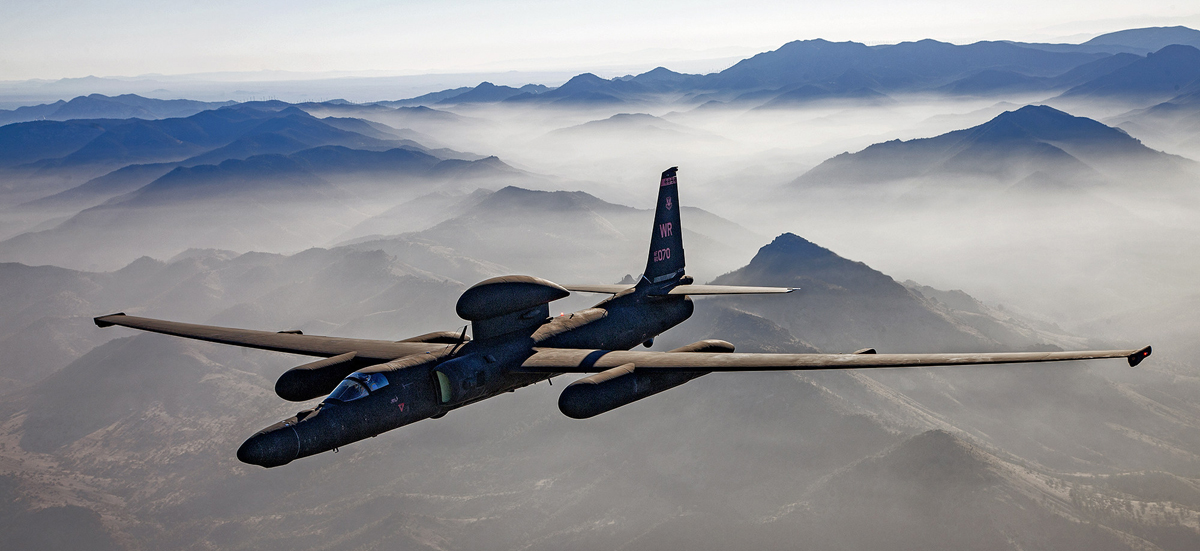Click Here to View This Page on Production Frontend
Click Here to Export Node Content
Click Here to View Printer-Friendly Version (Raw Backend)
Note: front-end display has links to styled print versions.
Content Node ID: 403273
On December 9 the U.S. Air Force undertook inflight connectivity trials with the Lockheed Martin F-22A and F-35A fighters, each of which carried a GatewayOne payload. Thanks to this equipment, the two aircraft passed critical mission data between themselves and ground nodes.
Conducted by the Air Force Research Laboratory (AFRL) and Air Force Lifecycle Management Center (AFLMC), with the 46th Test Squadron from Eglin AFB, the trials took place over the Yuma Proving Ground in Arizona. They involved an F-22 from the Edwards AFB-based 411th Flight Test Squadron and an F-35A from the Nellis AFB-based 59th Test and Evaluation Squadron.
A GatewayOne-equipped Kratos XQ-58A Valkyrie—from the AttritableOne low-cost unmanned “loyal wingman” program—was also launched from Yuma as part of the trial. However, its communications payload lost connectivity shortly after takeoff and it was unable to participate fully in the trials, although it was flown semi-autonomously in formation with the manned fighters.
The GatewayOne trial was mounted to demonstrate the transformative nature of the open architecture underpinning the Air Force’s Advanced Battle Management System (ABMS). This is part of a wider Department of Defense-led Joint All-Domain Command and Control program to securely connect all elements of the U.S. forces in a military “Internet of Things”.
During the December 9 test the GatewayOne system was used to translate transmitted data into the hitherto incompatible native languages of the F-22 (Intra-Flight Data Link) and F-35 (Multifunctional Advanced Data Link), in turn allowing that data to be displayed using each type’s organic systems. GatewayOne also allowed data that is typically only available on the ground to be pushed directly into the cockpits of the inflight aircraft. Other functions demonstrated included the passing of aircraft positional data to ground nodes to improve battle management, the passing of target tracks and cues from the ground, and also between the two aircraft types.
“Testing is all about pushing the limits of what’s possible, finding out where the toughest challenges are, and adapting creative solutions to overcoming difficult problem sets,” said Lieutenant Colonel Kate Stowe, GatewayONE program manager with the AFLMC . “The real win of the day was seeing the GatewayOne establish a secure two-way translational data path across multiple platforms and multiple domains. That’s the stuff ABMS is all about.”
Additional tests conducted earlier included the demonstration of connectivity between a ground node and a Boeing KC-46A Pegasus tanker using commercial internet routing standards over the Tactical Targeting Network Technology waveform. An F-35 also transmitted full-motion video to a ground controller.
Separate from the Air Force trials, Lockheed Martin demonstrated in mid-November advanced connectivity capability in a trial of distributed processing onboard a U-2S using Kubernetes containerization technology. The aircraft was fitted with an Enterprise Open System Architecture Mission Computer (EMC2) that is representative of the Open Mission Systems (OMS) computer currently being developed for the U-2.
During the flight test the Kubernetes cloud connected to a ground node to disseminate data, dynamically bridging datalinks across assets. The capability provides for an expansion of computational resources available for mission execution, and also the possibility for in-flight software upgrades, in turn permitting rapid adaptation to changing threat environments without costly and time-consuming system upgrades.
